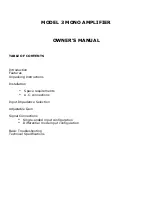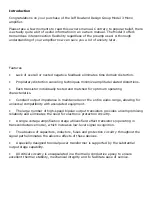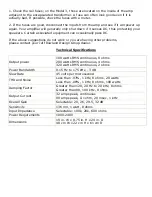
Signal Connections
The amplifiers from JEFF ROWLAND DESIGN GROUP offer unprecedented compatibility
with associated equipment. In all cases
turn the front panel power off before
connecting or disconnecting signal wires. "Hot patching" is not recommended.
A series of descriptions follows to explain the hookup schemes most commonly utilized
in home stereo applications. For a more thorough understanding of the terms used in
this section, please read the enclosed paper on differential mode technology.
The back panel of the amplifier is clearly marked with the following:
• paralleled right and left channel outputs
• remote power switch connector
• right and left channel inputs (single-ended non-inverting, single-ended inverting and
differential inputs)
• right and left channel input impedance adjust
• AC power switch
• AC power connector
• AC line fuse
Operation with a single-ended output preamplifier
For standard operation, insert the interconnect cables from your preamp to the non-
inverting RCA inputs. Insert shorting plugs into each of the inverting RCA inputs. If you
desire inverted operation, reverse the above procedure. Either of the two paralleled
outputs can be used, or all four if you are bi-wiring your speakers.
Operation with a balanced output preamplifier
Insert the output of your preamplifier into either the differential XLR input or both the
single-ended inverting and non-inverting RCA inputs. You can then utilize either of the
two paralleled outputs, or all four if you are bi-wiring your speakers.
Basic Troubleshooting
If your amplifier does not turn on:
1. Make sure the power cord is connected to both the inlet at the back of the amp and
an appropriate AC power source.
2. Check the power supply fuses located next to the AC inlet; there are two fuses--one is
a spare.
If your amplifier shuts down after being turned on, with or without the presence of
signal:























